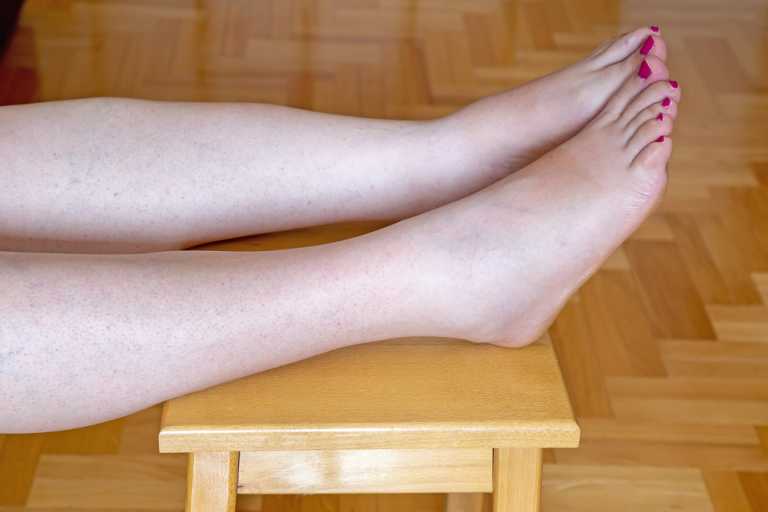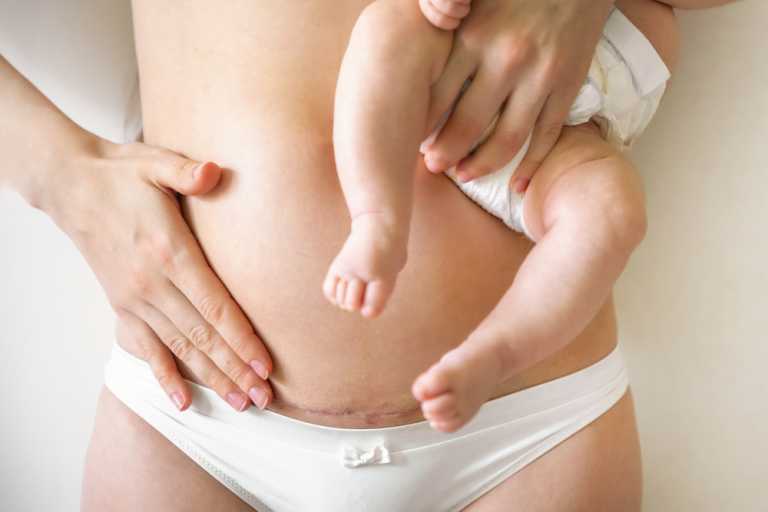Most women can take a bath 3 weeks after their c-section. But, if you’re a fast healer or have a low BMI, you could be ready after 2 weeks. On the other hand, If you have diabetes, a high BMI, or have had an infection, you may have to wait 4 weeks or more.
How to Tell if You’re Ready for a Bath After a C-Section
So, are you one of the lucky ones, or do you have to wait a little longer? Here’s a handy checklist to help you decide.
You can take a bath after your c-section when:
- Your incision is closed, with no sign of bleeding or infection.
- Your stitches have dissolved, or your staples have been removed.
- You’re not in pain.
- You don’t have a fever.
- Your doctor says it’s OK.
How to Have a Bath After a C-Section
If you’ve checked off everything on the list, congrats! You’re ready. But before you dive into a steaming hot bubble bath, there are a few things you should know.
Getting into the Bath
You should not start bending until 4–6 weeks after your c-section. So, you may find getting in and out of the bath tricky at first.
Use your arms to support yourself, and ask a partner or family member for help if possible.
Temperature
While a steaming hot bath might sound amazing, it’s not the best for wound healing. Stick to warm baths for at least 6 weeks.
Products
While your incision is healing, you shouldn’t use any oils or perfumes on your wound. So, avoid scented products and bubble baths, and wash your hair separately.
Instead, use gentle bath products designed for newborn skin. These will be the kindest to your healing incision.
Washing
Treat your incision gently. Scrubbing off any remaining stitches, glue, or dressing adhesive might be tempting. But resist the urge! You should avoid scrubbing and applying soap directly on to your incision.
Ideally, pour your unscented bath product into your hands, create a lather, and let it wash over your scar. Then, rinse by allowing water to flow over your belly. Never spray your incision with a handheld shower head.
Drying
The most crucial step is to dry your wound thoroughly. Leftover moisture will raise your risk of infection.
To do this, pat your tummy carefully with a clean towel and allow it to air dry before getting dressed. Using a hair dryer on a cool setting can speed things up. Take extra care to keep your incision dry if you are plus-sized.
How Long Should You Stay in the Bath?
Baths are excellent for cesarean recovery because they give you a little time to yourself. So, you might want to soak for hours.
Unfortunately, it’s not good for your incision to be wet for too long. Limit yourself to 20 minutes until you’re at least 6 weeks post-c-section.
When Can You Have a Bath After a C-Section With Dissolvable Stitches?
By 3 to 4 weeks postpartum, your stitches will be nearly gone, and it’ll be safe to take a bath.
Just make sure you don’t scrub or pick at any leftover stitches. If you have any knots that are slow to dissolve and are bothering you, see a nurse. They will be able to deal with them safely.
When Can You Take a Bath After a C-Section With Glue?
Surgical glue will start to come off after 5 days but can last up to 3 weeks. It’s OK to take a bath after 2 to 3 weeks, as long as you don’t try to scrub it off.
Don’t use hydrogen peroxide or rubbing alcohol to remove the glue. It could slow your healing.
When Can You Take a Bath After a C-Section With Steri-Strips?
Steri-strips can take up to 10 days to fall off, and you shouldn’t have a bath before then. If you have any still attached after 2 weeks, it’s OK to remove them and bathe.
How to Wash After a C-Section
While baths are off the table, it’s safe to shower 24 hours after a cesarean delivery. However, all the same rules apply:
- Don’t scrub your incision.
- Don’t apply soap directly to your wound.
- Don’t spray your belly with a handheld shower.
- Dry yourself thoroughly afterwards.
You can also have a very shallow or sitz bath, as long as you don’t submerge your belly.
What Are the Signs of Infection After a C-Section?
If you take a bath too soon, allow your incision to stay wet, or use harsh products, you could cause infection. These are the signs to look out for:
- High temperature.
- New or Increased bleeding from your incision or vagina.
- Increased pain or swelling.
- Nausea or vomiting.
- Foul Smelling discharge from your wound or vagina.
- Green or yellow discharge from your incision.
- Open incision.
- Redness spreading away from your incision.
If you experience any of these symptoms, call your doctor right away.




